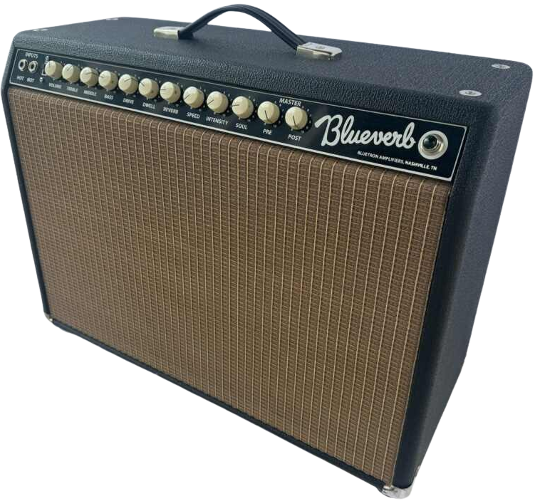In 1973 at the age of 13 I played my first professional gig. Shortly after that I bought my first Fender amp–a 1969 Fender Twin Reverb with Electrovoice Coffee Can Magnet SRO speakers. I’ve bought and sold many Fender amps since then but I still have my first Twin. It didn’t take long for me to discover the self-service tube tester at my local drug store which sparked a life-long fascination with tube amplifiers. As my Fender amps developed problems-as tube amps are know to do– I accepted each challenge along the way and figured out on my own how to fix the problem myself. I learned all that I could about tube amplifier design and spent a lot of time reading the 1954 Radiotron Designers Handbook–the bible of the audio industry. I came to understand that distortion was what gave tube amplifiers their charm and made one sound different from another. I discovered that the most desirable amplifiers have a mixture of a few different kinds of distortion, each one pleasing to the ears of discerning guitar players. In my quest to understand all that I could about tube guitar amplifier distortion, I created my own philosophy. I wanted to understand the truth about which distortions were ‘good’ and which were ‘bad’, so I fashioned circuits that would emphasize each type of distortion. Then I played and listened. A lot. Over and over and over until I learned the truth about each type of distortion and knew what I believed.
In 2004 I started Bluetron and set out to improve on the Fender amps of the 1960s. As an amp builder, Leo Fender is one of my heroes, so I knew improving on his designs would be a challenge. With the lessons I had taught myself over thirty years of playing, fixing and modding Fender amps, I set out to build an amplifier that had much more of the good kinds of distortion and a whole lot less of the bad. I started with a Fender Super Reverb (well actually five late-sixties models) and began to make circuit modifications and component substitutions. My good friend and most-excellent blues man, Tommy Stillwell, helped me with the early listening analysis. His experience and perspective were invaluable. In appreciation for his efforts and input, I gave Tommy the first Bluetron Blueverb prototype, which he proceed to gig with until just recently. He’s now gigging with a Bluetron Bluedrive that I traded him for the prototype.

In 2005 I moved to Nashville, Tennessee–again with the help of Tommy and his partner Sheila Pence. Thank you, both! I began building Blueverbs and through the kindness and generousity of Tom Bukovac, they really caught on.

Me, Dan Huff and Joe Don Rooney at Blackbird Studios
during the recording of ‘Still Feels Good’ in 2007
As was the case with many small business, the economic collapse of 2008 presented challenges that were difficult to overcome and after the first 100 Bluetron amplifiers production ceased. After a long hiatus, the time may be right for a reboot. I am considering introduction of a few new products–a twelve-inch blues guitar speaker and an amp that pays homage to Howard Dumble. I still support the amps I’ve built and am mending some fences in hopes of making a return to building.
Dave ‘Smitty’ Smith
